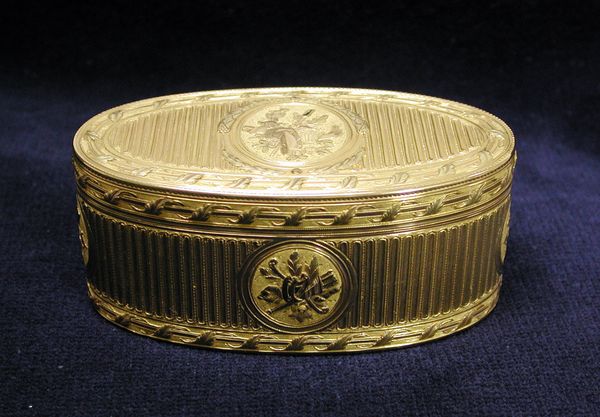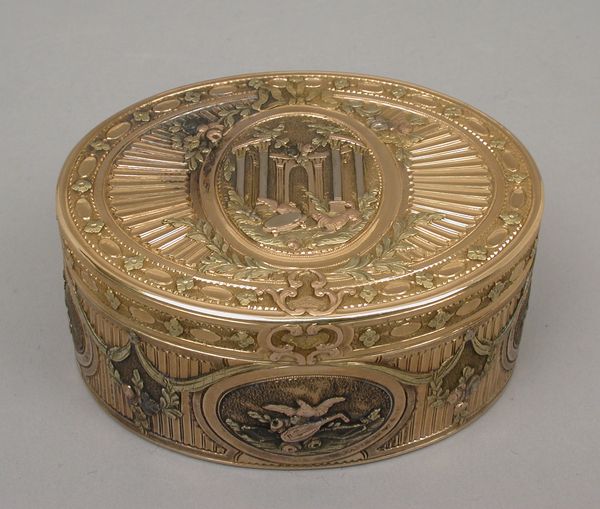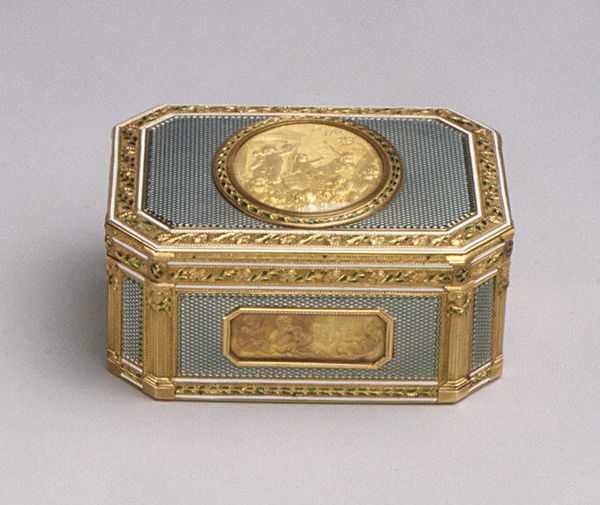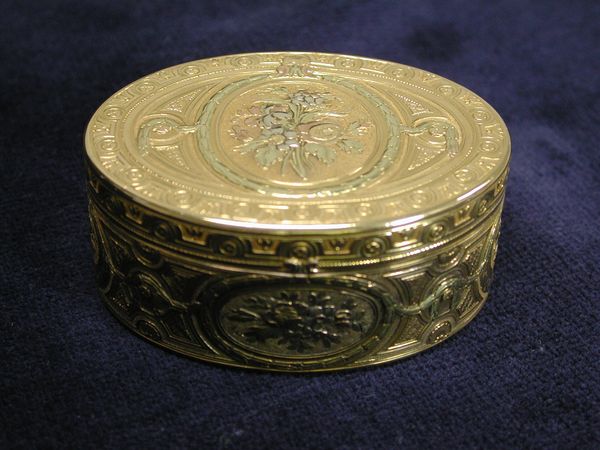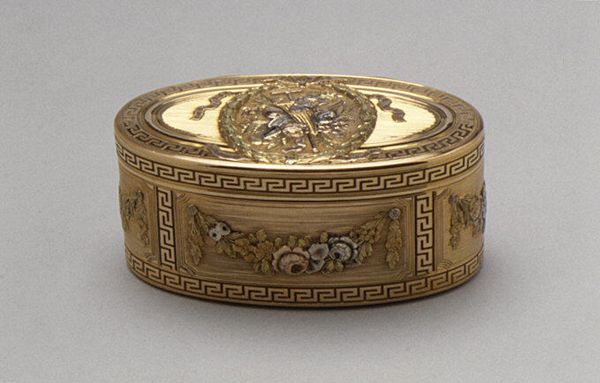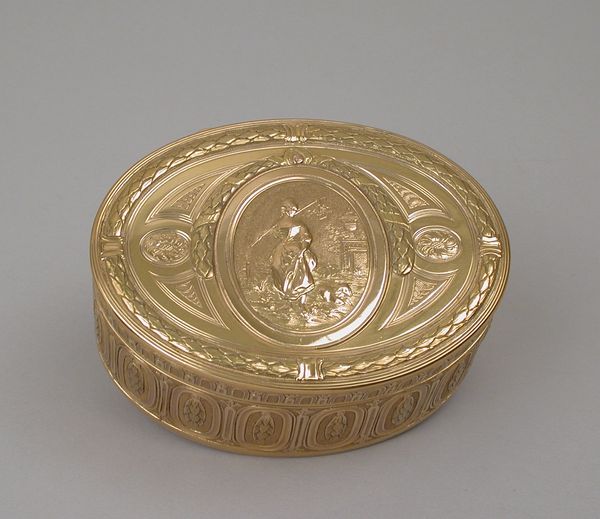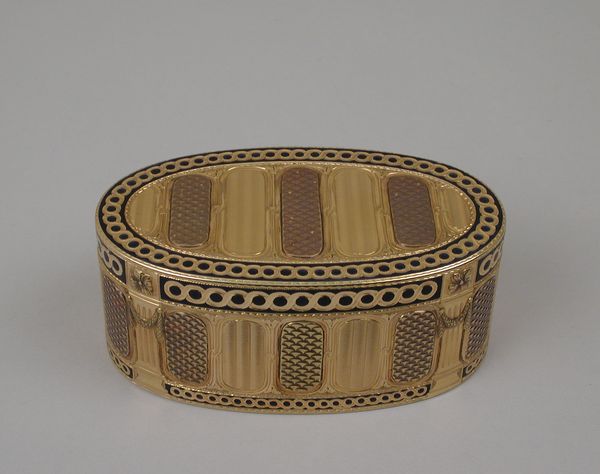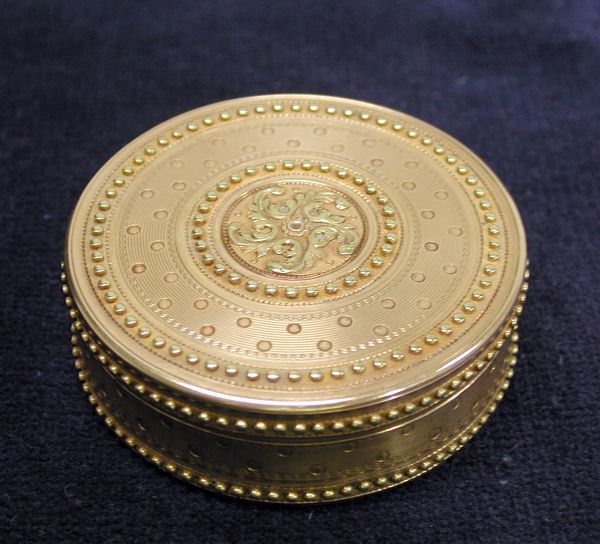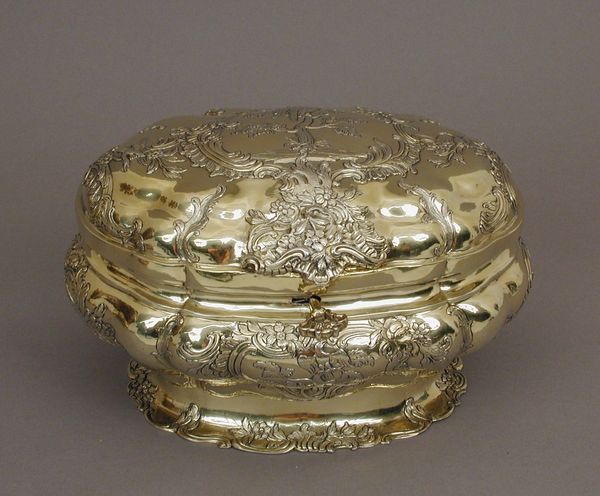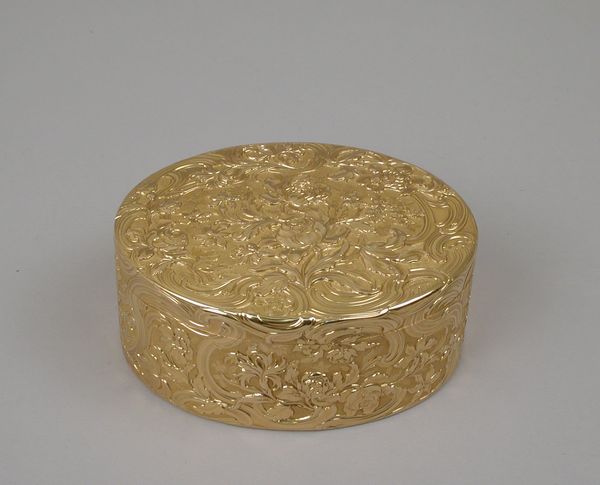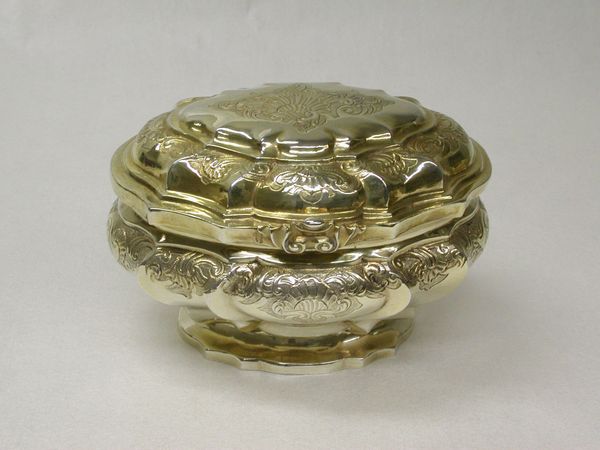
Dimensions: 1 1/4 × 2 1/2 × 2 in., 3.1oz. (3.2 × 6.4 × 5.1 cm, 88.5g)
Copyright: Public Domain
Curator: Look closely at this exquisite "Snuffbox" crafted in Switzerland between 1775 and 1785. The materials include gold, brass, and what appears to be an engraved decorative element, a Rococo ornament. Editor: The piece immediately strikes me as ornate, even decadent. The oval shape and combination of gold and dark green give it a rich, almost jewel-like presence. What story does this tiny stage set tell? Curator: Given the period, consider the social context: the rise of luxury goods, trade routes bringing in exotic materials, the specialized labor needed to produce something like this. Think about the goldsmiths, engravers, and lapidaries whose expertise converged. Editor: The central image on the lid depicts Cupid before a temple. There's a sense of offering or sacrifice. I read this as an allegory—love and beauty being presented to something divine or sacred. Notice the tiny detail in the carving; what's being offered exactly? Curator: Good question! Analyzing this as a product of craftsmanship, we have to admire how each component has been shaped and meticulously assembled; the engraving alone must have taken considerable time, representing skill but also very deliberate and skillful labour conditions. Editor: I'm drawn to the interplay of the cupid and the temple—Classical architecture grounding this image of love within a framework of order and permanence. The very act of offering perhaps hints at something psychological as well, the human desire to control and codify such an uncontrollable emotion like love. Curator: What’s really interesting is considering how portable luxury objects of the 18th century ended up influencing the development of factory specialism as producers pushed limits, scaling to mass satisfy demand. Editor: Seeing how these motifs survive and recur reminds us how enduring those underlying desires and fears around human relationships can be. Curator: Absolutely. By looking closely at the production and usage of such things, we see connections between individual expression and historical systems. Editor: Indeed. Analyzing the iconography, we appreciate how it embodies the aesthetic tastes of its era, revealing lasting symbols and values, perhaps reflecting upon human experiences.
Comments
No comments
Be the first to comment and join the conversation on the ultimate creative platform.
